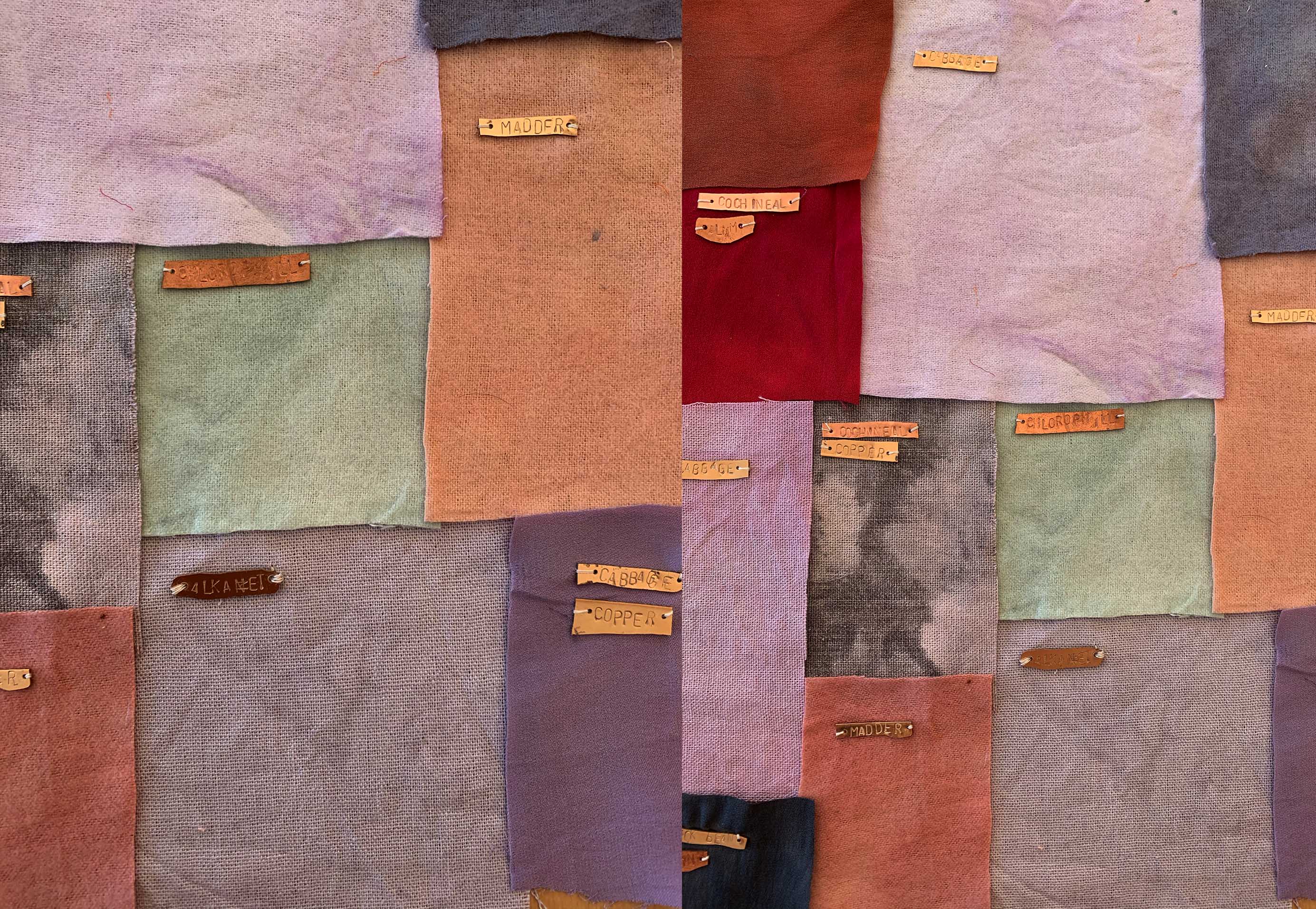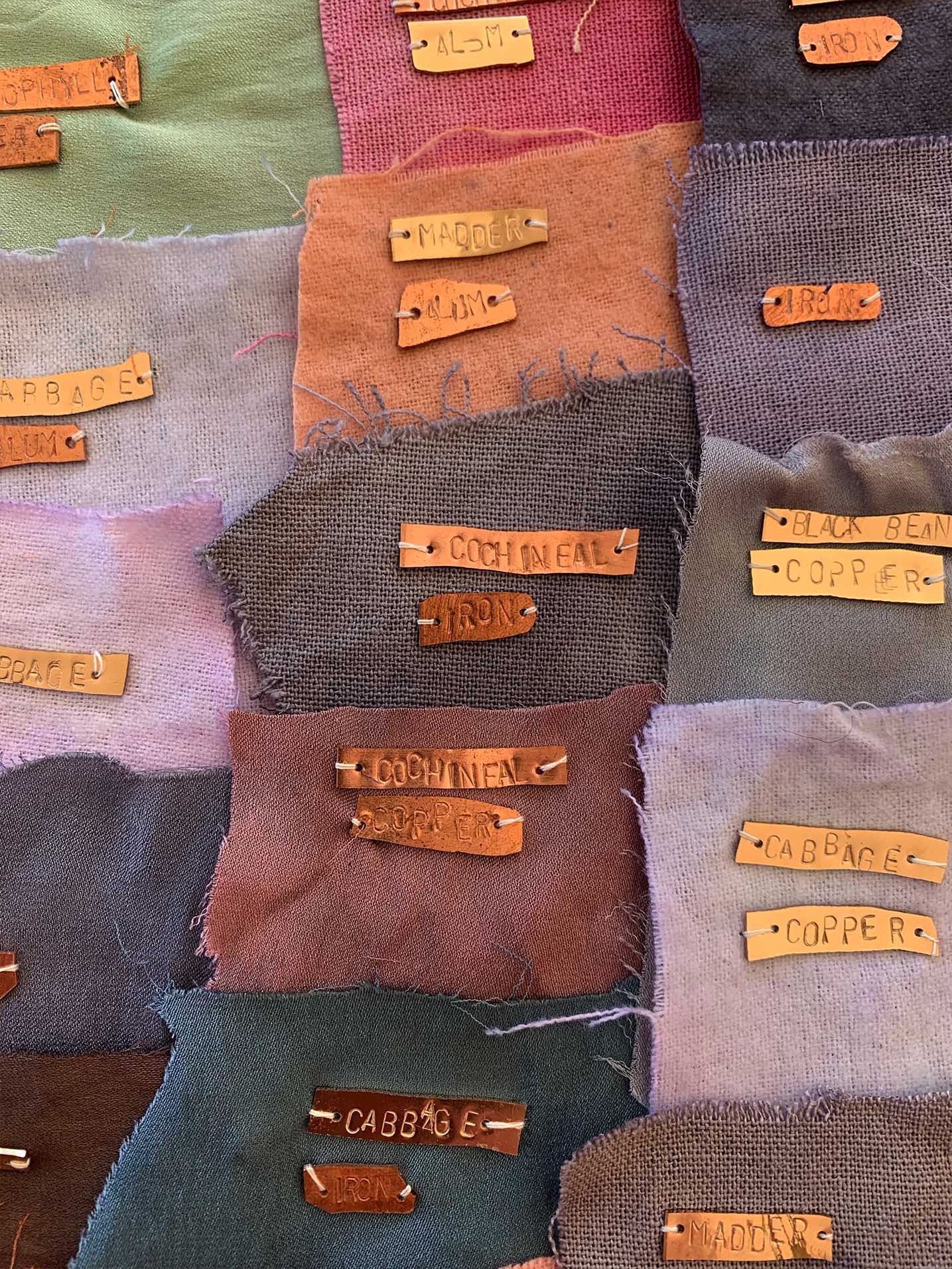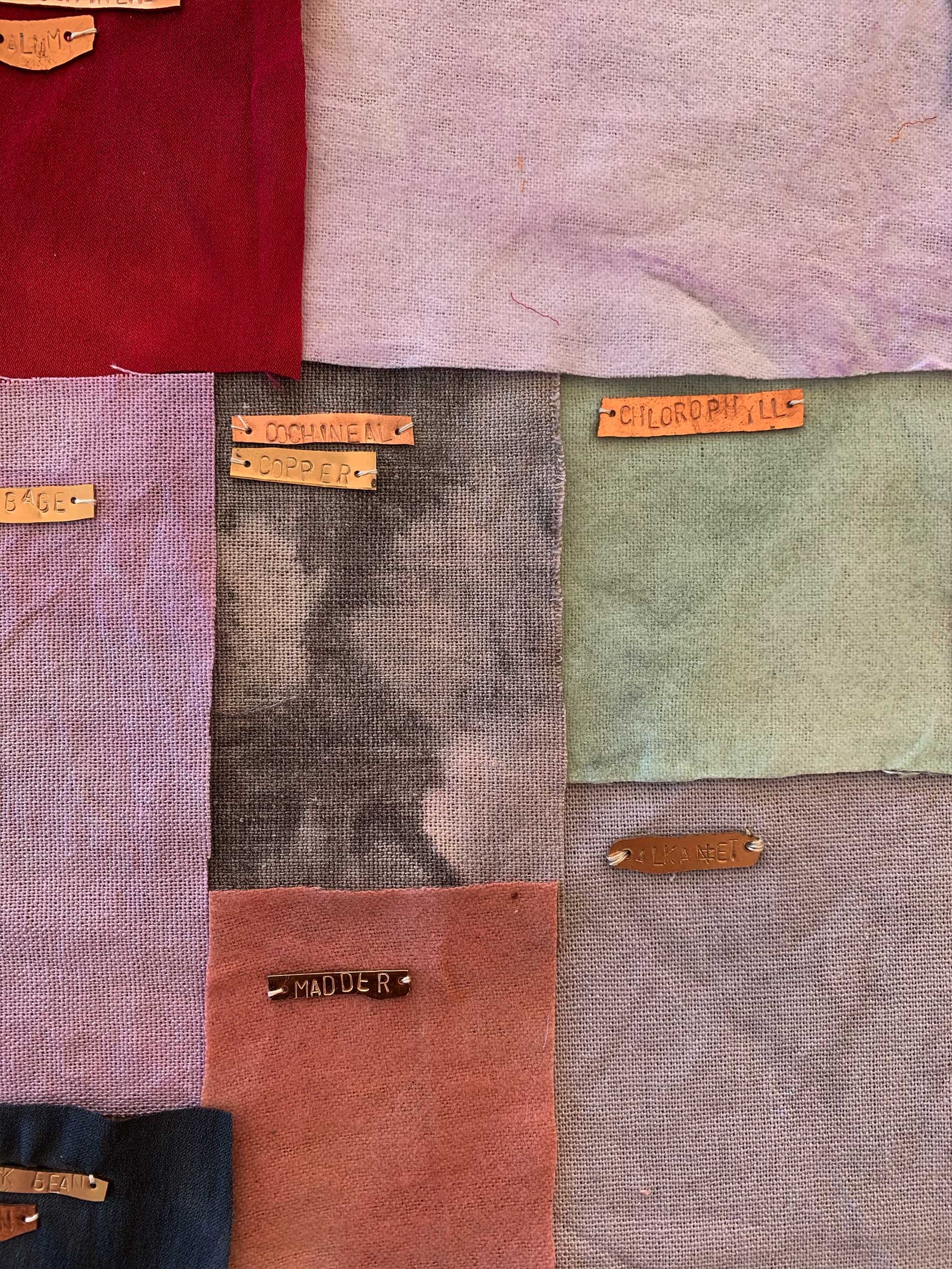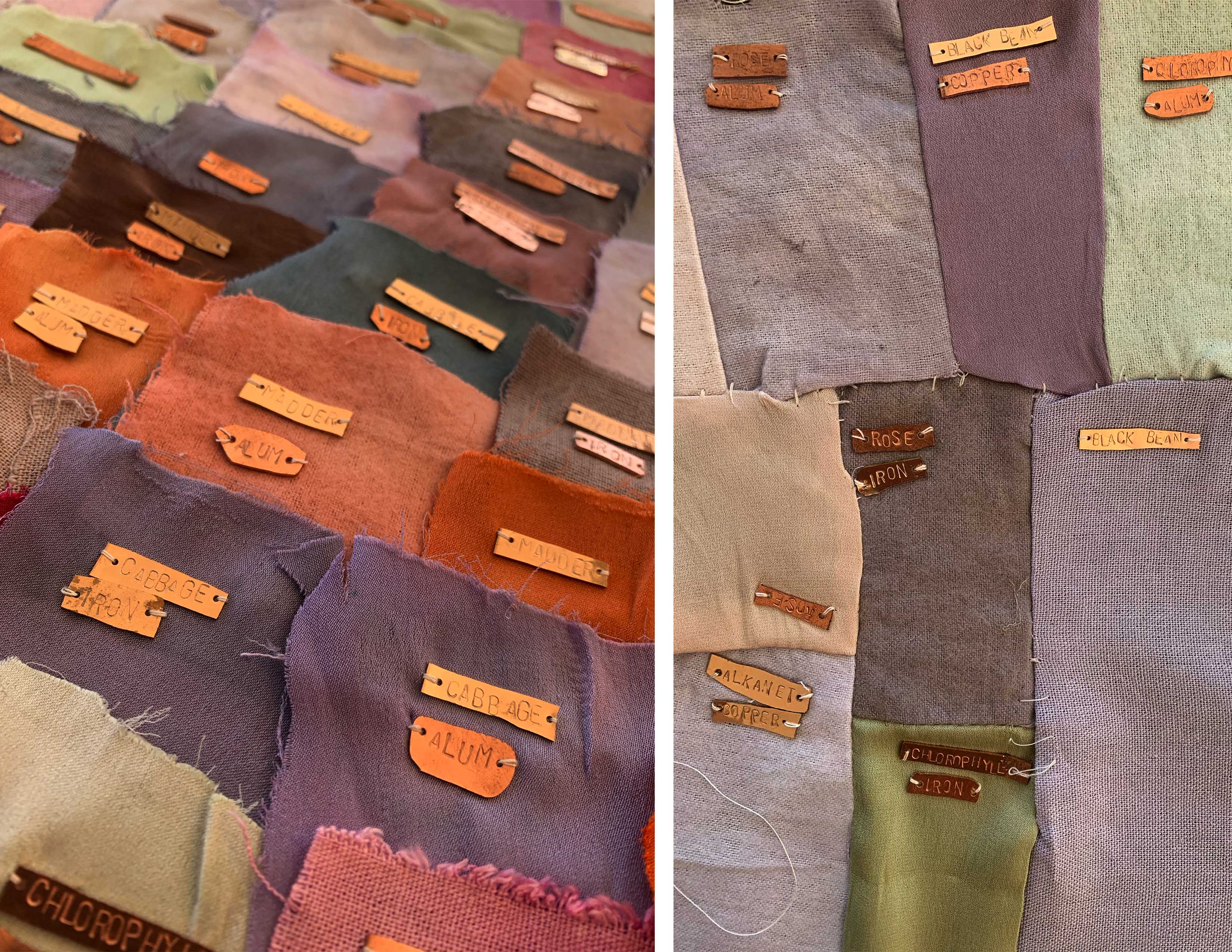Biochromes¶
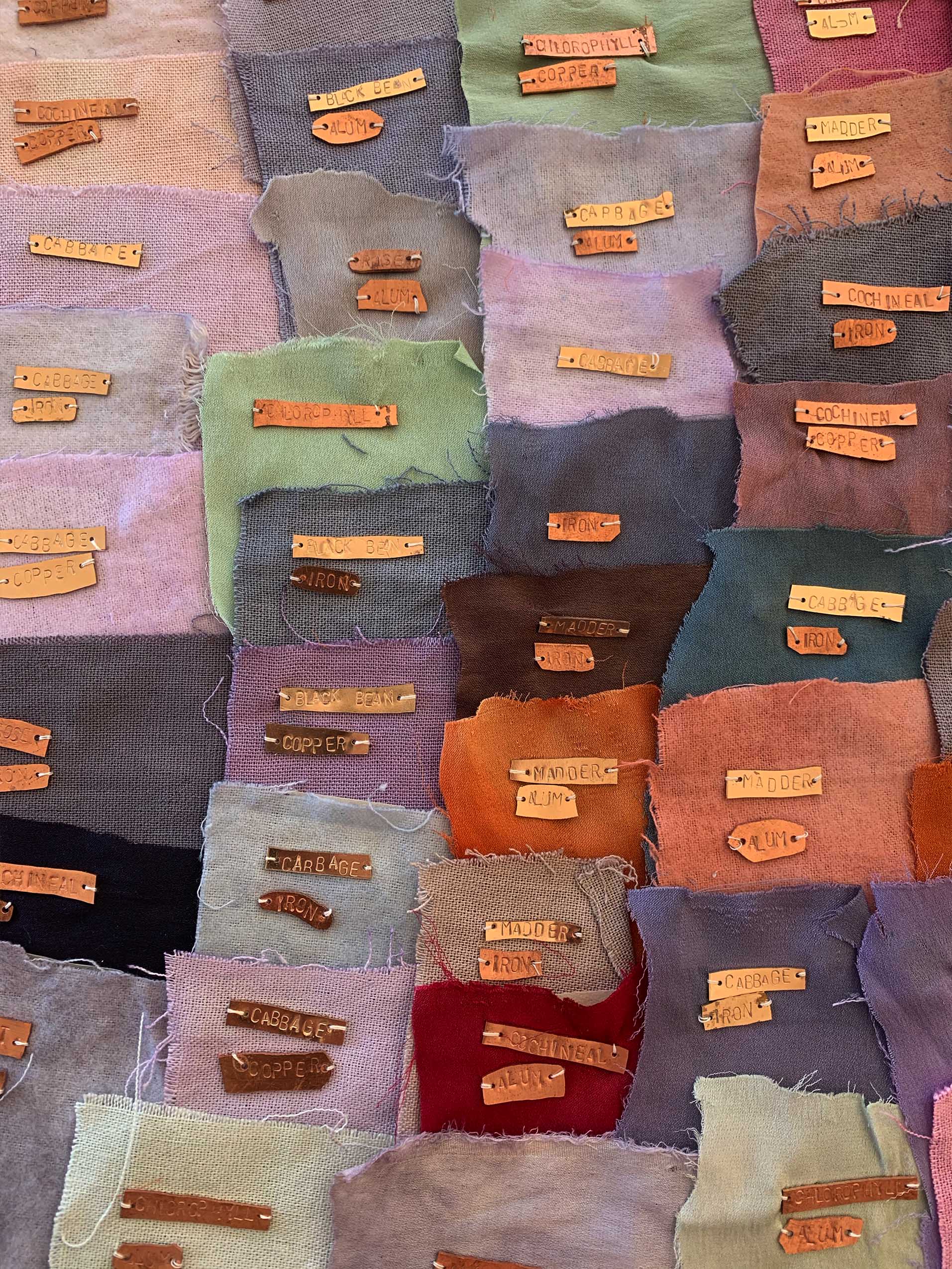
We created natural dyes out of Purple Cabbage, Rose Petals, Madder Root, Alkanet, Chlorophyll, Black Bean, Turmeric, Cochineal, and Pomegranate Skins.
We used Iron, Copper, and Alum as mordants.
We used Vinegar and Baking Soda as Modifiers.
We used Silk, Cotton and Linen for Samples.
Through each combination, we created over 243 unique different colors.
Process¶
We first started by cutting up the three different fabrics into sample pieces. We divided the fabrics into four groups and mordanted one group each in Copper, Iron, Alum. We left one group with no mordant for a constant. It took about half an hour of boiling the fabrics to mordant them. Next, we made the dyes.
Each of the dyes followed the same process; weighing out the fabrics, proportioning the right amount of dye for the fabrics, and then boiling the dye in water for an hour. After mordanting our fabric, the material was wet, so it was very difficult to get an accurate weight. As a result, we made too much dye for almost every color. Making the dye was quite straight forward. There was something very soothing and meaningful about following the same color recipes that have been used for generations over thousands of years.
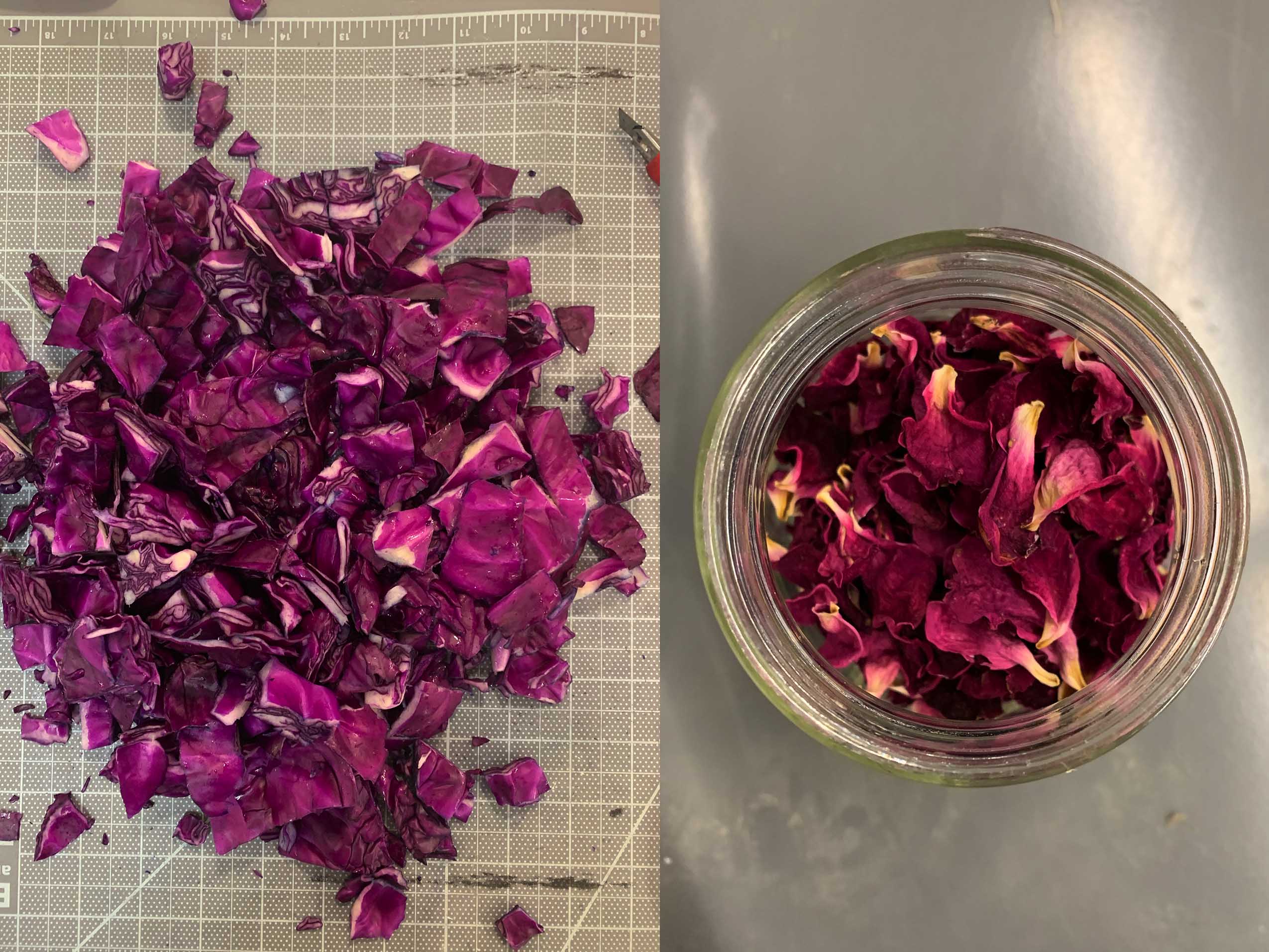

When we were making dye out of found objects, such as purple cabbage, rose petals and pomegranate, it was very easy to tell when the dye was ready because the physical objects became colorless and the color remained in the water.

It was so much fun to throw the fabrics into the dye baths. The labeling slowed us down, but thankfully, we were very careful. It became a game of meticulous labeling of each color and fabric. In the end we had about 150 samples. We left the fabrics soaking in the dyes overnight.
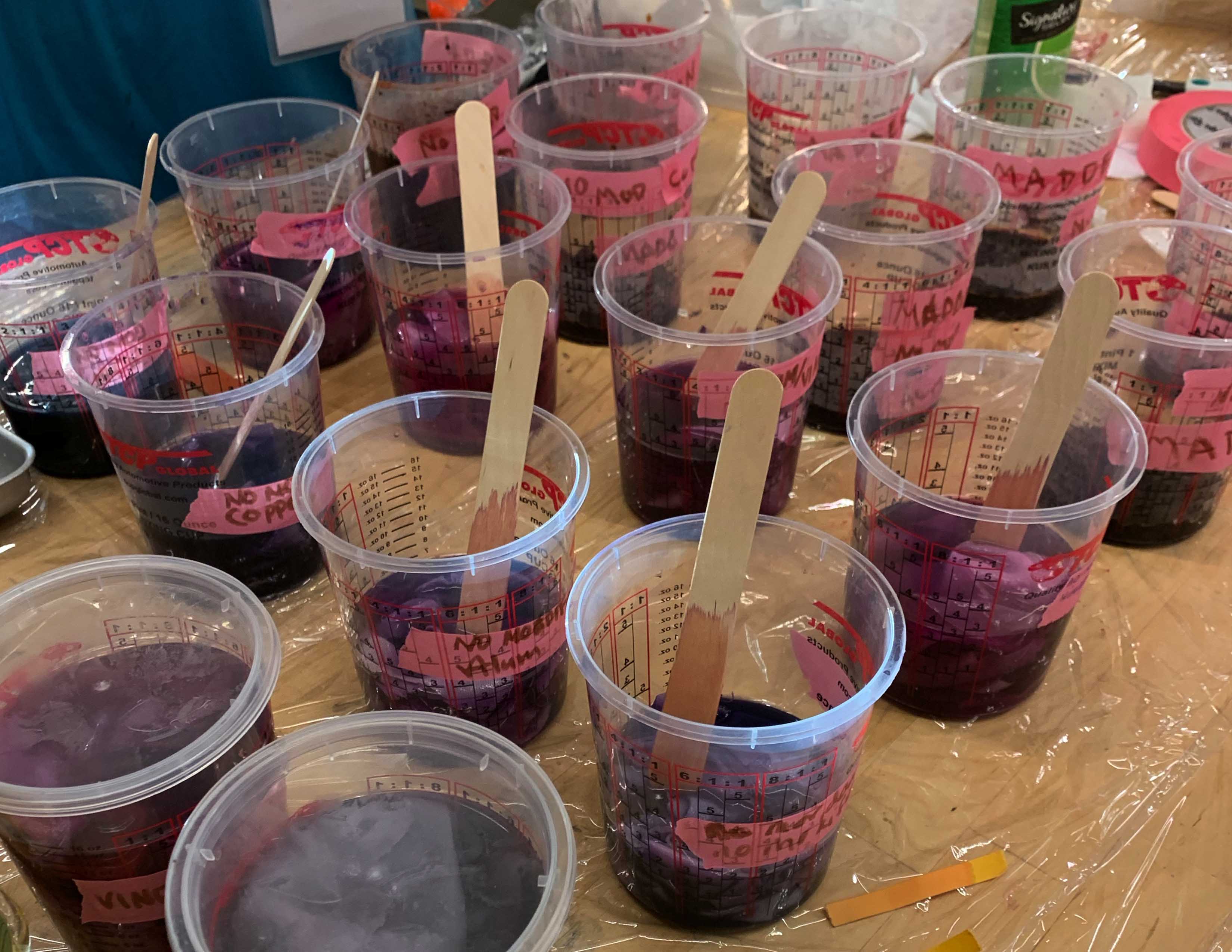
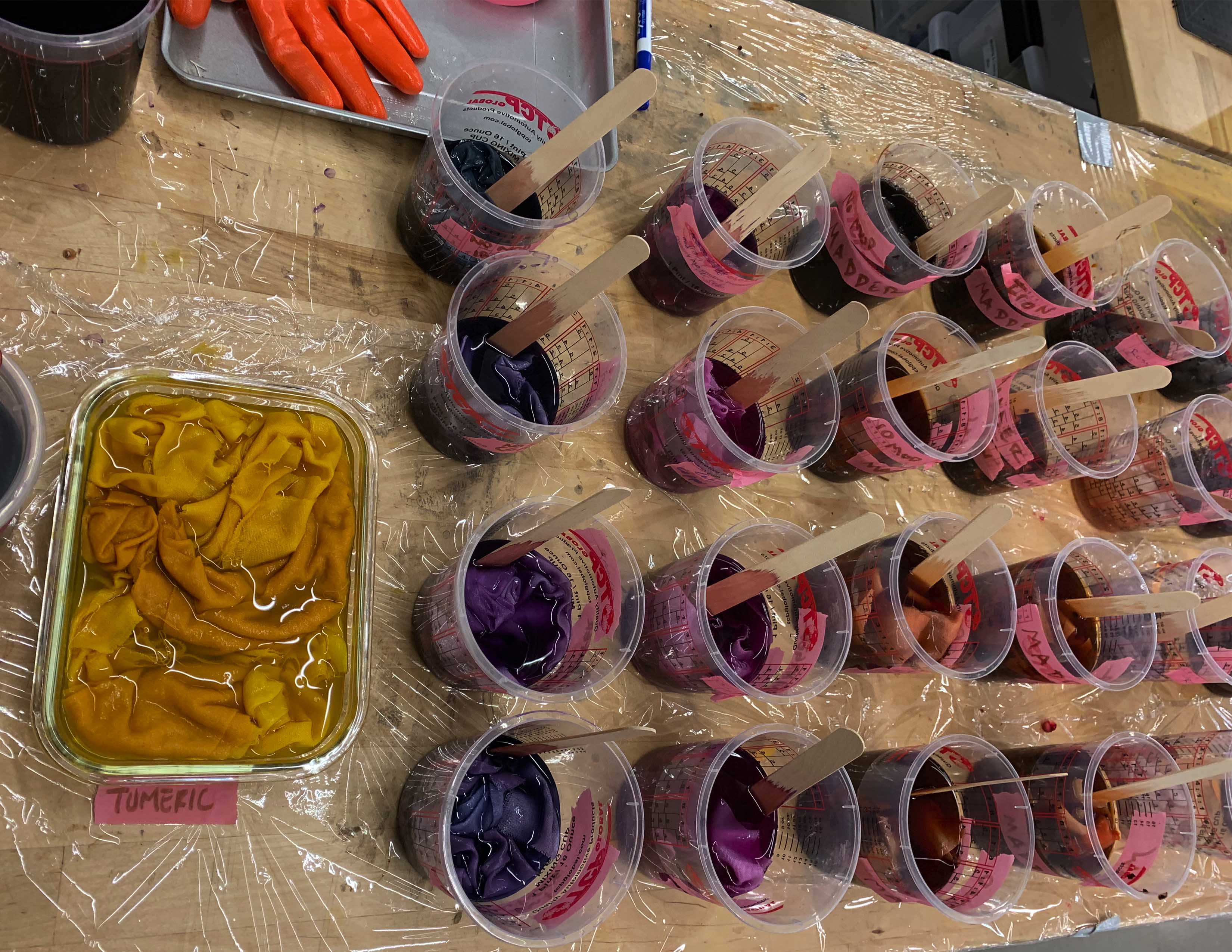

We came back the next day to so much beauty! All of our samples soaked up the colors marvelously. Then came our second meticulous challenge of rinsing the dyes out of each of the samples and re-labeling them as they dried. Even with three of us working as a well-oiled machine this still took an hour, but it was the most rewarding part of the process.
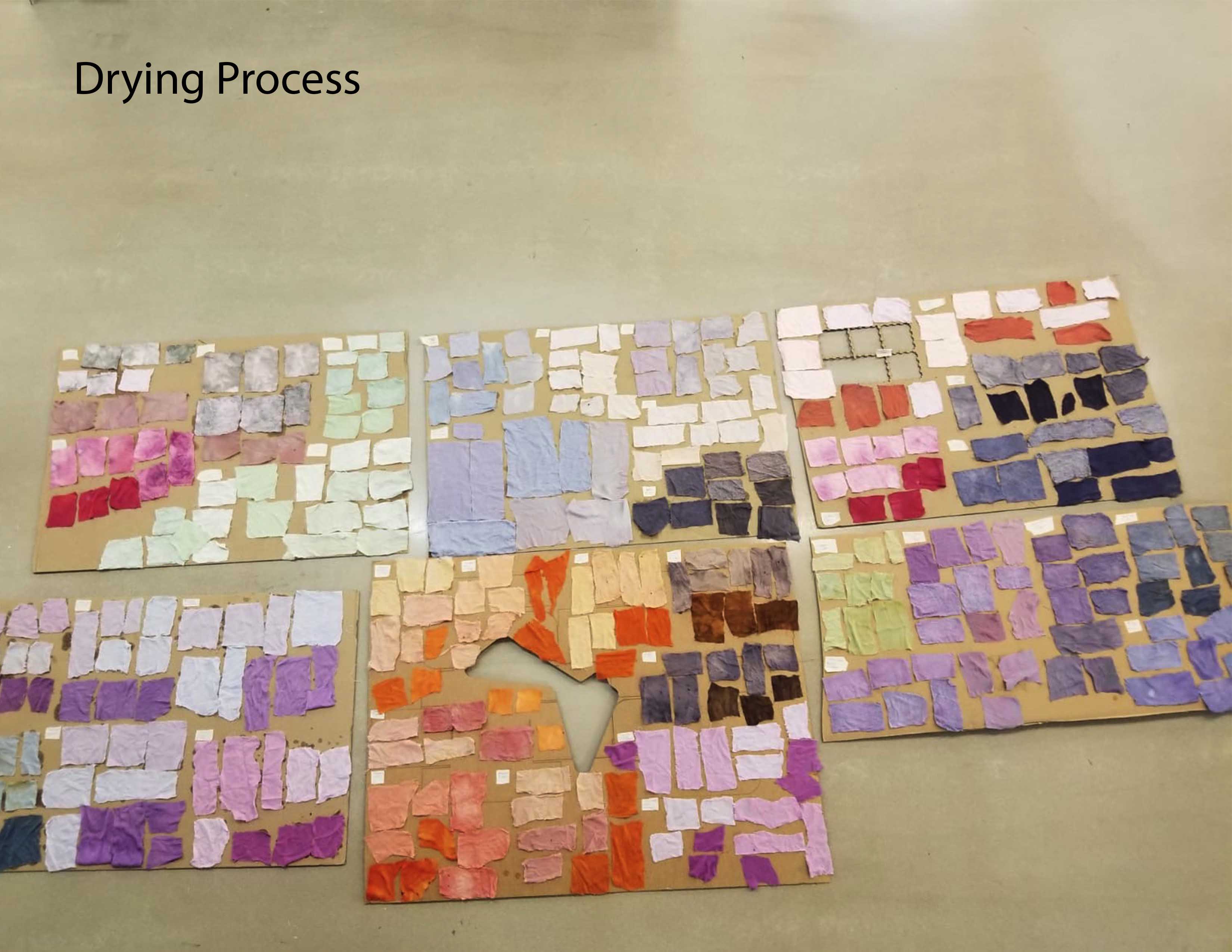
I loved the Iron modified swatches, as they created the richest colors. The iron modified silk swatches are easily my favorite. I also loved using the cabbage as a dye, because we got so much color variation changing the mordant and ph. The chlorophyll created the most beautiful mint greens, and the rose petals stole the show for the most variety, ranging from a deep blue to a soft pink.


With the leftover dyes, we boiled away the water to extract the ink and make pigments. Our lab actually really struggled with this part. We were using the wrong kind of glass containers, and they kept breaking because of the heat. We broke three glass containers (each filled to the brim with dyes), and it was a nightmare. We had hot liquid pouring everywhere. After our third broken glass, we decided to stop and try a different technique of extracting pigment. We took fresh alkaline and added some rubbing alcohol to turn it into a marker. It was satisfying to make our own markers.
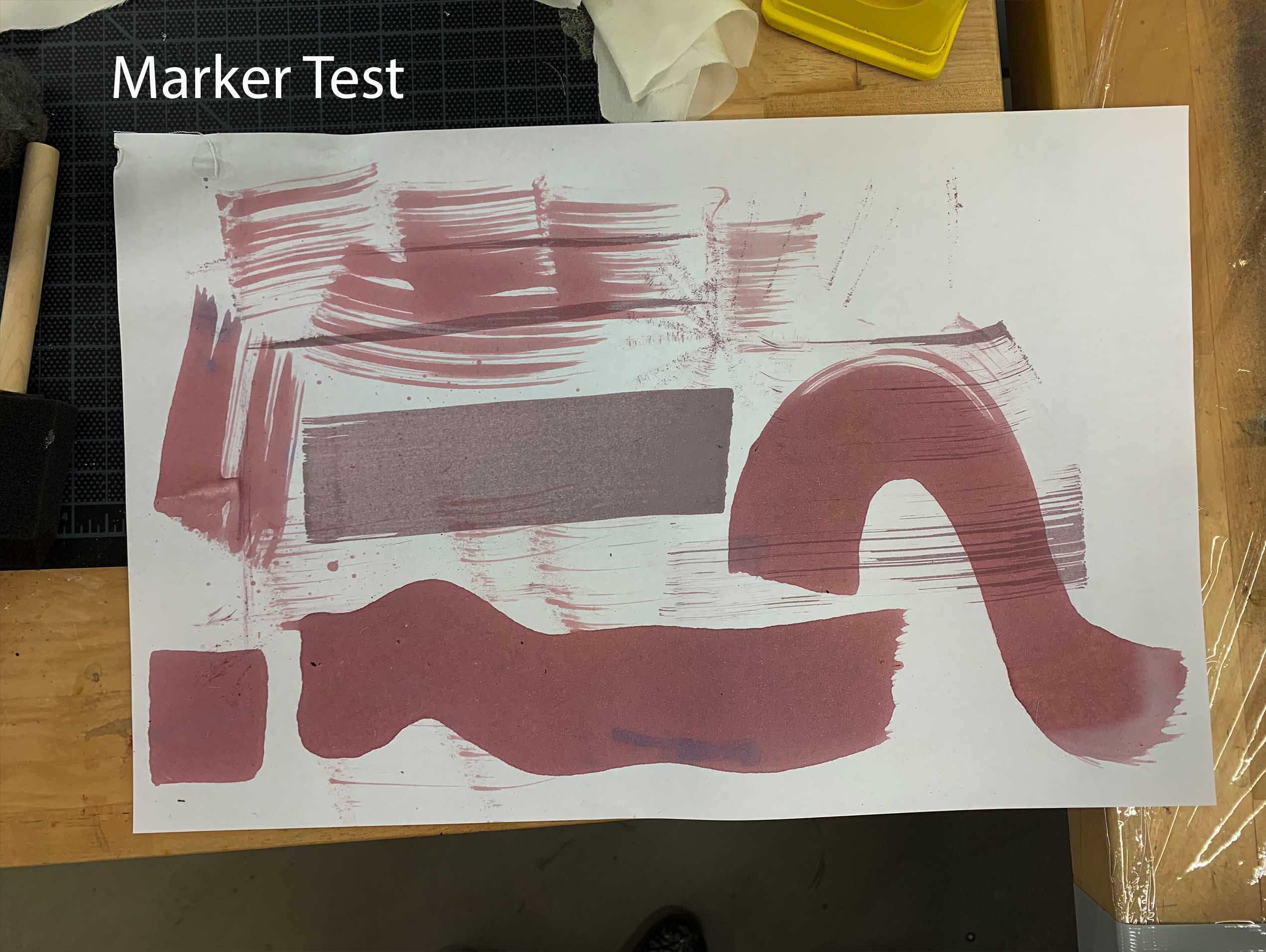
After circular fashion last week, something felt funny about creating swatches for the colors and doing nothing with them. I decided I wanted to do something meaningful with my swatches in a way that would not only preserve the data, but would also elevate the colors.
Knowing that the colors would fade significantly over time, I chose to create metal labels for each of my colors. I wanted the labels to outlive the color, and serve as an archive and an artifact. I created labels out of copper, brass and bronze scraps that I had laying around my studio. Each of the labels adorns the fabric and elevates it to fine art. The colors of the metal make each fabric swatch pop.
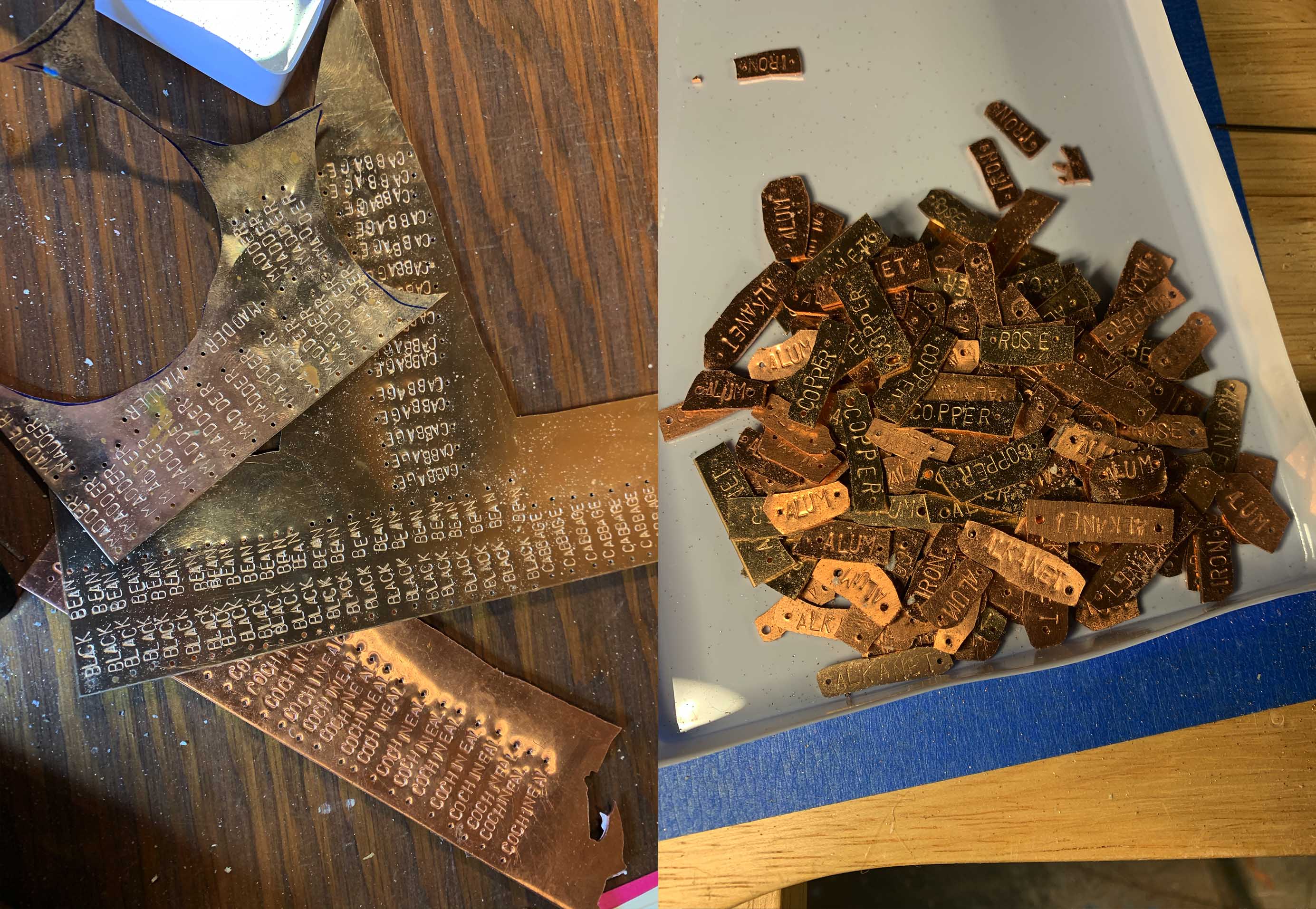

I began to sew the labels into a wall hanging, but had some tension trouble with my sewing machine, which majorly slowed down the process, but it was a treat to mix and match the color swatches like a quilt. There is so much beauty in the natural colors and materials of our planet. It felt good to be a part of the age-old tradition of transferring those beautiful colors to fabric.
Final¶
